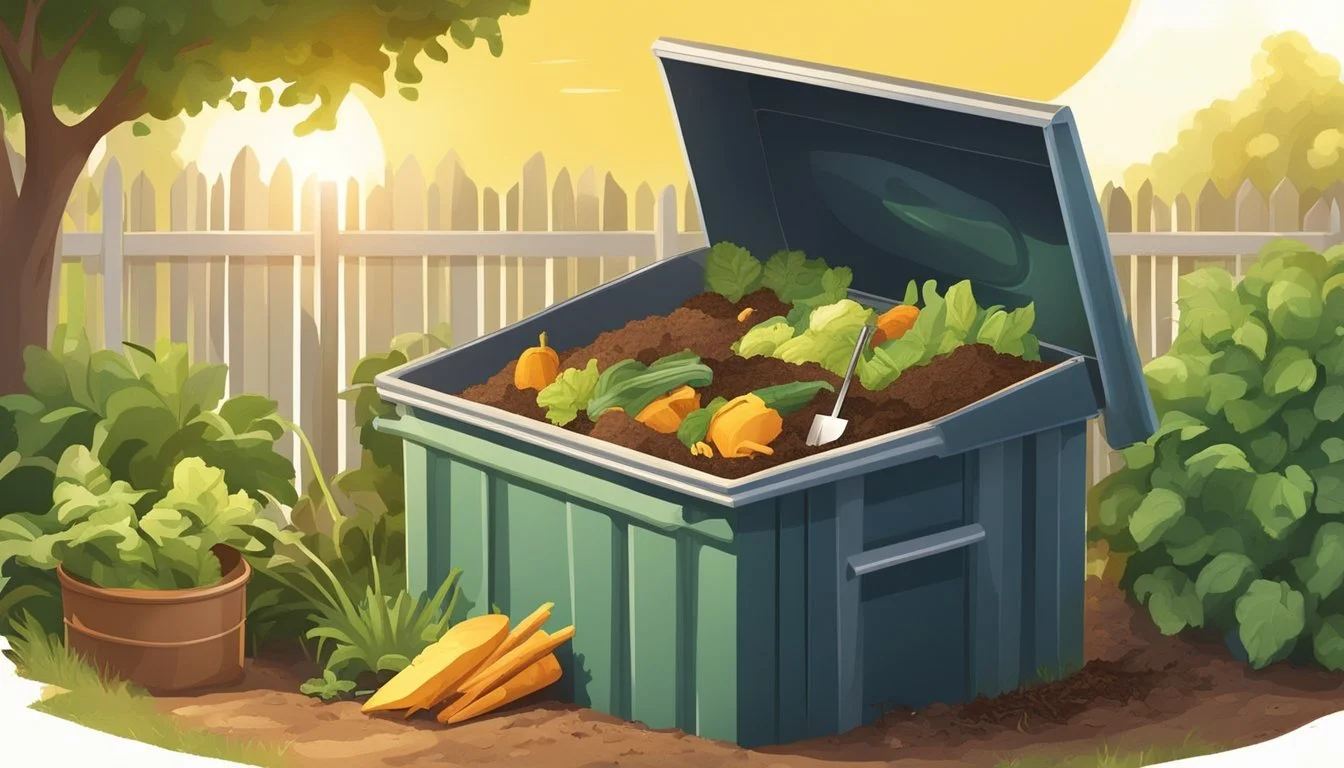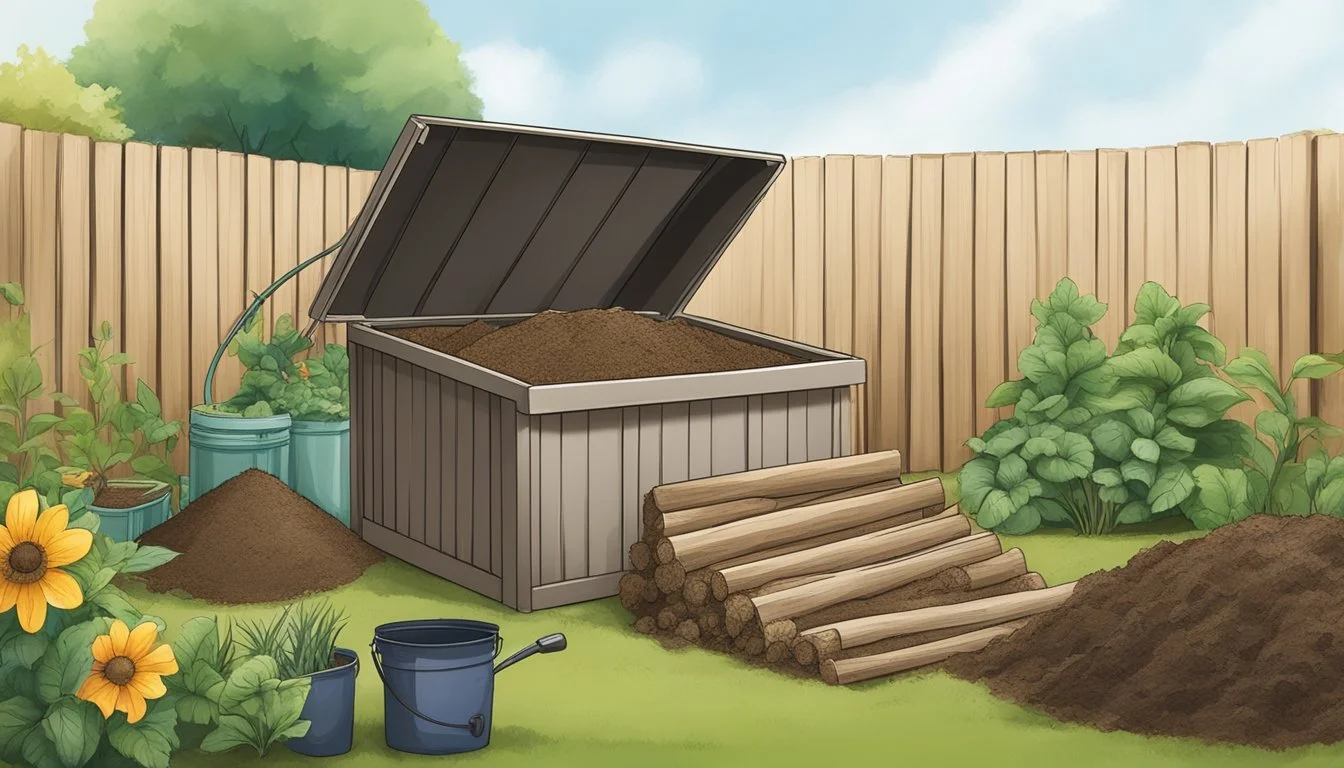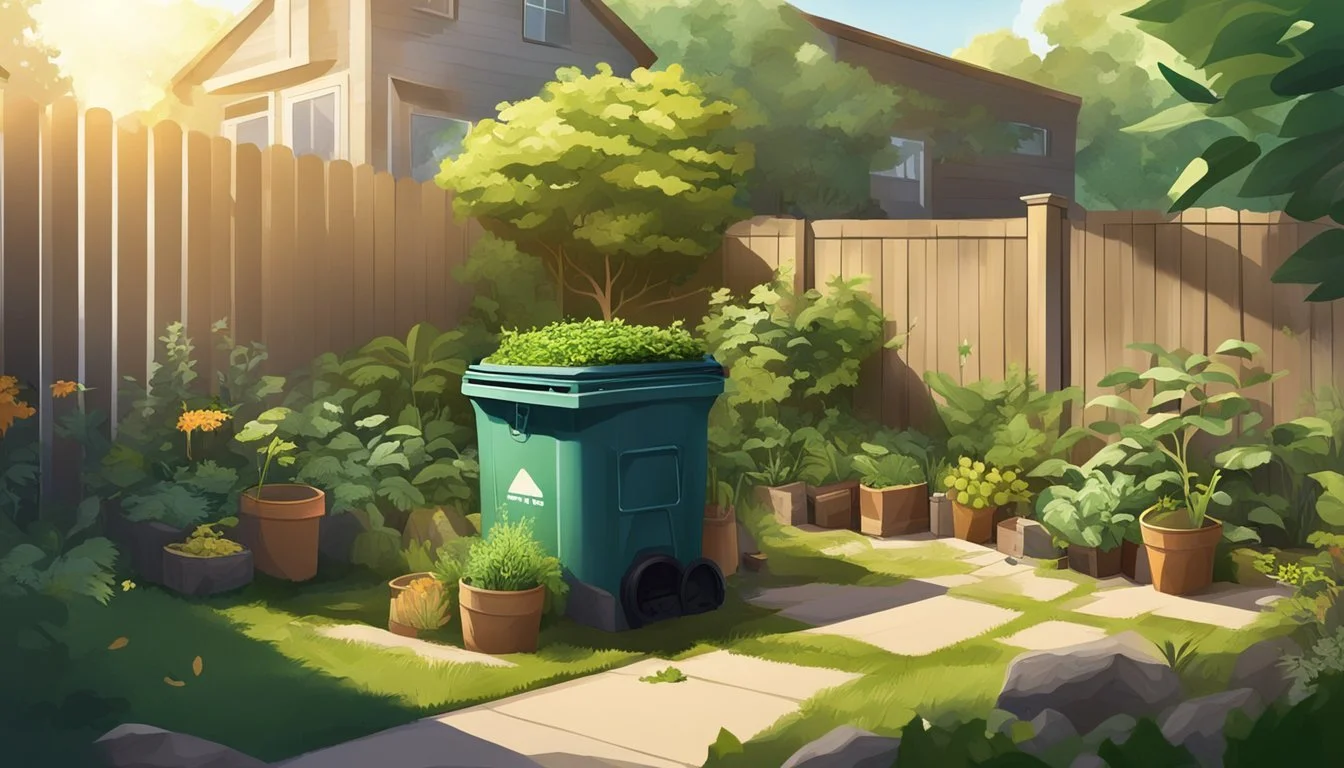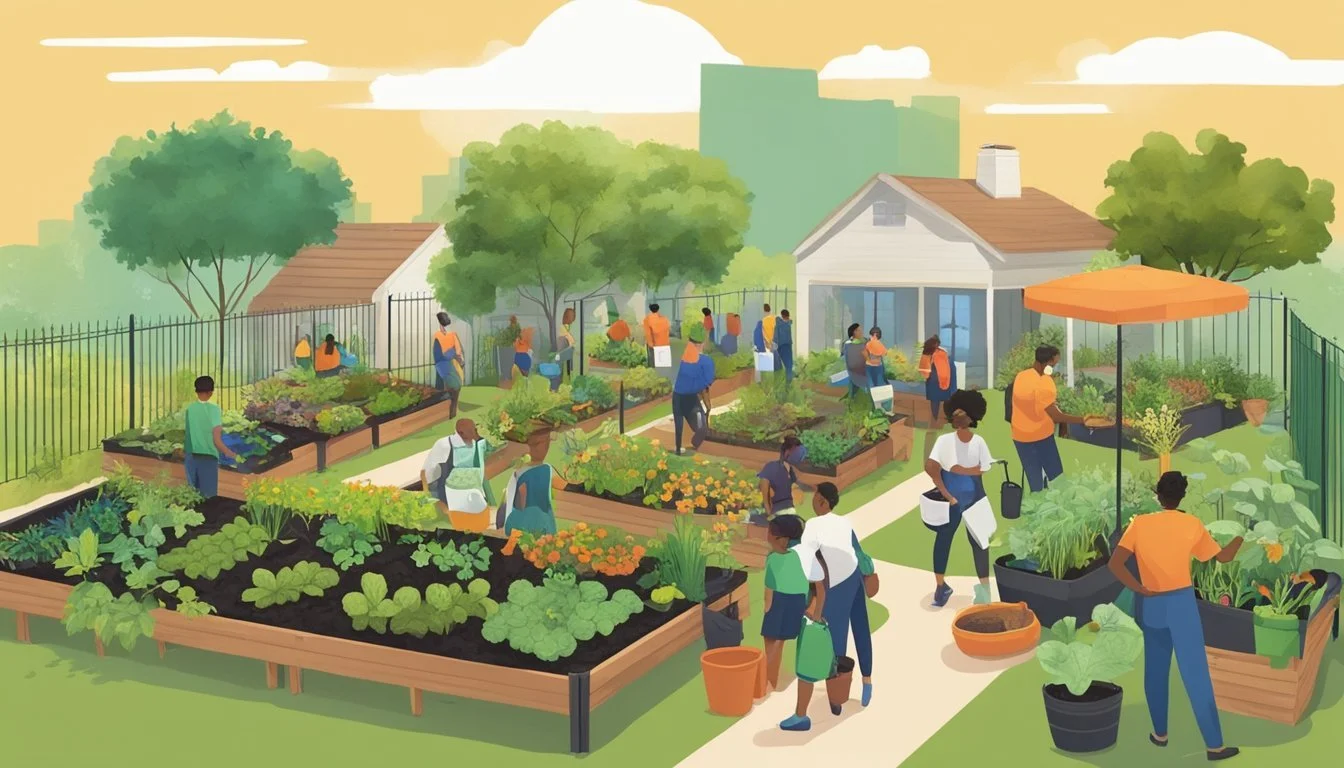Guide to Composting in Sugar Land, TX
Essential Tips for Beginners
Composting in Sugar Land, Texas, presents an excellent opportunity for residents to contribute to a greener, more sustainable community. As an eco-friendly practice, composting transforms organic waste into valuable fertilizer that enhances soil health and aids in plant growth. This natural process not only diverts waste from landfills but also enriches the local soil and reduces the need for chemical fertilizers.
The city of Sugar Land provides guidelines and services to support residents who wish to participate in composting. They suggest setting out green waste by 7 a.m. on collection day, with loose materials such as grass clippings and leaves neatly placed in clear or translucent bags. For those seeking to take an active role in reducing their ecological footprint, this guide is a resource to help them understand the basic principles of composting and how to effectively integrate it into their daily routine.
Engaging in composting practices is easier than many might think. Sugar Land's environmental initiatives, along with community programs like the free Community Composting at the Texas Farmers' Market, demonstrate a commitment to sustainability. Residents have access to resources and information that make starting and maintaining a compost system at home or participating in communal composting straightforward and impactful.
Basics of Composting
Composting is an efficient way to transform everyday waste into valuable soil amendment. It plays a crucial role in reducing the environmental footprint while enhancing the quality of the soil.
What Is Composting?
Composting is the controlled process of breaking down organic material into a substance called humus. This is achieved through the combined action of water, oxygen, microorganisms, and decomposing organic materials such as leaves, fruit scraps, and grass clippings. The process involves balancing carbon-rich elements, which provide energy for microorganisms, with nitrogen-containing materials that supply the proteins necessary for their growth.
Benefits of Composting
Reduces Waste: Composting significantly cuts the amount of organic waste that would otherwise end up in landfills, where they contribute to the generation of methane, a potent greenhouse gas.
Improves Soil Quality: The humus created from composting is rich in nutrients that enhance soil structure, texture, pH balance, and fertility.
Water Conservation: By using compost, the soil's water retention capability is improved, reducing the need for frequent watering.
Promotes Healthy Plant Growth: Compost provides a balanced mix of essential nutrients that are slowly released into the soil, making them available for plant uptake over time.
Eco-friendly: It supports the recycling of organic resources and encourages a sustainable loop of nutrients within the ecosystem.
Setting Up Your Composting System
Setting up a composting system in Sugar Land, TX involves a few critical steps: finding the optimal spot, picking the right bin, and understanding the composting process. Following these guidelines will ensure successful composting efforts.
Choosing the Right Location
The ideal location for a compost bin is a dry area with access to sun or partial shade. It should be close enough to your home for convenience, but far enough to prevent any potential odor issues. Adequate drainage and protection from extreme weather are also essential to maintain the right balance of moisture and temperature.
Selecting a Compost Bin
Select a compost bin that suits your household's waste output and available space. Options range from open piles to closed bins and tumblers. Consider bins with aeration holes and space for insulation to regulate temperature and oxygen levels, which are critical for decomposing organic matter effectively.
Composting Methods Explained
Basic composting relies on layering brown and green materials to create an environment where organic waste can break down. Here are essential factors to consider:
Moisture: Your pile should be as wet as a wrung-out sponge.
Oxygen: Regularly turning the pile adds oxygen, preventing foul odors.
Temperature: Heat helps break down the materials faster.
Aeration: This promotes decomposition and controls moisture.
Understanding these elements will lead to a successful composting system, turning waste into nutrient-rich soil for your garden.
What to Compost
In Sugar Land, Texas, enthusiastic gardeners can contribute to sustainability by composting various organic materials. Composting benefits the environment and provides rich soil for gardens. It's important to know what items can be composted to create a successful compost pile.
Greens and Browns
Greens are nitrogen-rich materials essential for composting. These include:
Food waste: such as fruit and vegetable scraps.
Coffee grounds: a good source of nitrogen.
Grass clippings: freshly mowed grass that has not been treated with synthetic fertilizers.
Browns are carbon-rich materials and provide the necessary bulk to allow air to filter through the compost pile:
Leaves: fallen leaves, which are abundant in autumn.
Cardboard: non-coated cardboard, like shipping boxes, cut into small pieces.
Wood chips: small pieces of untreated wood.
A balanced mix of greens and browns is crucial for effective composting.
Items to Avoid
Certain materials should not be included in a compost pile as they can create odors, attract pests, or contain substances harmful to plants and soil. Here's what to keep out:
Meat, dairy, and bones: These can attract pests and create unpleasant odors.
Fats and oils: As they do not break down well, they can ruin the balance of your compost.
Treated wood: Contains chemicals that can be harmful to the composting process and the resulting soil.
Synthetic fertilizers: Can kill beneficial microorganisms in your compost pile.
Pet waste: May contain pathogens harmful to humans and should be avoided.
For a successful composting experience in Sugar Land, TX, be mindful of these guidelines to create a healthy, nutrient-rich compost for your garden.
Composting Techniques
In Sugar Land, Texas, residents have several composting methods at their disposal. Whether one prefers the passive approach to building a traditional compost pile or wants a more hands-on experience like vermicomposting, these techniques cater to diverse lifestyles and gardening practices.
Traditional Composting
Traditional composting involves creating a compost pile, where organic matter decomposes over time. To ensure efficient breakdown, one must balance green materials, such as vegetable scraps, with brown materials like dry leaves to create a nitrogen and carbon mix. This method requires composting at home, which includes regular turning to aerate the pile and maintain moisture, much like a damp sponge.
Materials: Vegetable scraps, leaves, grass clippings, and non-glossy paper
Procedure: Layer green and brown materials, maintain moisture, turn pile regularly
Timeframe: Several weeks to months, depending on conditions and care
Vermicomposting
Vermicomposting incorporates the use of earthworms to expedite the decomposition process. This technique is ideal for those with limited outdoor space, as it can be done indoors using specialized bins. The worms consume organic waste, producing rich mulch known as worm castings.
Materials: Fruit and vegetable scraps, coffee grounds, non-acidic waste
Setup: A bin with bedding material (shredded newspaper, coco coir), earthworms
Maintenance: Feed worms regularly, keep bedding moist, harvest castings as needed
Compost Tumblers and Bins
For a more manageable approach, compost tumblers and bins offer an enclosed environment that can accelerate the composting process. These containers provide easier maintenance, prevent pests, and can produce compost more quickly due to their ability to retain heat and moisture effectively.
Types: Stationary bins, rotating tumblers
Advantages: Pest control, ease of use, faster decomposition
Consideration: Select appropriate size for needs, ensure proper aeration
Each composting method has its own set of benefits and requirements, making it crucial for Sugar Land residents to choose the one that aligns with their garden size, waste reduction goals, and lifestyle. Whether opting for the natural method of traditional composting, employing the efficiency of vermicomposting, or embracing the convenience of compost tumblers and bins, composting is a rewarding practice for any gardening enthusiast.
Maintaining Your Compost
Proper maintenance is crucial for a successful composting process. It involves striking the right balance between greens and browns, ensuring adequate moisture and aeration, and managing the temperature and carbon-to-nitrogen ratio.
Balancing Green and Brown Materials
One must ensure a ratio of roughly 50% green materials, which provide nitrogen, and 50% brown materials, which provide carbon. Green materials include kitchen scraps and yard trimmings, while brown materials encompass items such as dry leaves and cardboard. It is important to chop or shred larger pieces to accelerate decomposition.
Moisture and Aeration
A compost pile should have the moisture content of a wrung-out sponge. Too much water can lead to anaerobic conditions and odor issues, whereas too little can halt the composting process. Regularly turn the pile to introduce oxygen, which helps encourage aerobic bacteria to break down organic matter efficiently.
Temperature and Carbon-to-Nitrogen Ratio
An ideal compost pile reaches temperatures between 135-160°F, which is key for breaking down materials and killing pathogens. The carbon-to-nitrogen ratio (C) should be about 30:1. High carbon materials are typically browns, while high nitrogen materials are greens. Monitoring these variables helps one manage a compost pile that decomposes materials effectively and produces nutrient-rich compost.
Using Your Compost
Before adding compost to your garden, it's crucial to recognize when it is fully decomposed and ready for use, and to understand the best methods for applying compost to support healthy plant growth.
When Is Compost Finished?
Finished compost, also referred to as humus, has a dark color, crumbly texture, and an earthy smell indicating that it has matured sufficiently. To assess whether compost is finished, one should notice no distinguishable food or yard waste in the mix. A simple test is to bag some compost and check for heat generation; finished compost will not heat up, indicating that the microbial activity has completed. Following the guidelines from the Green Waste Program in Sugar Land, compost should reach maturity without recognizable organic material from the initial pile.
Applying Compost to Your Garden
When applying compost, mix about two inches of compost into the top six inches of soil to enrich potting soil before planting. This can be done for both new plantings and as a part of ongoing garden maintenance. Apply the compost evenly across the garden bed, making it into a nurturing medium for various plants to thrive.
For an effective mulch to retain moisture and suppress weeds, use the chunkier material that remains after sifting through compost. This can protect and insulate plant roots from extreme temperatures. It is advised to layer this material on the soil surface around the plants without mixing it into the soil.
In each of these applications, remember the aim is to create a beneficial environment for plants by using compost to improve soil structure, nutrient content, and moisture retention.
Troubleshooting Common Composting Issues
Composting in Sugar Land, Texas, can occasionally encounter challenges such as odors, unwanted pests, or issues with compost piles not heating up properly. These concerns can often be traced back to imbalances in moisture, oxygen, temperature, or organic matter within the compost pile.
Odor Management
Unpleasant odors often indicate an imbalance in the compost pile. A common culprit is a lack of oxygen which prevents organic matter from breaking down properly. Turning the compost pile to introduce more oxygen and adjusting the ratio of green to brown materials can mitigate this issue. For proper odor control, the compost pile should maintain a carbon-to-nitrogen ratio of about 25-30:1.
Pest Control
Rodents and flies can be attracted to compost piles if food scraps are not covered appropriately with brown materials like leaves or straw. Ensuring a proper mix and covering new additions with carbon-rich elements can create an inhospitable environment for pests. For effective pest control, Sugar Land composters should also make sure to maintain the correct levels of moisture to avoid creating breeding grounds for flies.
Compost Pile Not Heating Up
A compost pile that fails to heat up is typically lacking in nitrogen, moisture, or microorganisms essential for decomposition. Adding green materials, such as food scraps or grass clippings, can boost nitrogen levels. It's also important to keep the compost moist but not waterlogged, as too much water can lower the pile temperature and impede the composting process. Regularly turning the pile can redistribute heat and microbes evenly throughout.
Community Involvement and Environmental Impact
Community composting programs in Sugar Land, TX, demonstrate a proactive approach to waste reduction and environmental stewardship, indicating a commitment to sustainability through local efforts.
Community Composting Programs
In Sugar Land, community composting initiatives harness local engagement to tackle waste. The Green Waste Program encourages residents to compost green waste like grass clippings and leaves, fostering a collective movement towards a zero waste goal. Such initiatives align with education, promoting understanding of recycling and its value in resource conservation.
Educational Outreach: Workshops and school programs inform residents about composting benefits.
Accessible Bins: Provision of compost bins for easy participation.
Community involvement is further seen in designated drop-off areas that offer convenience for residents to contribute to composting efforts.
Reducing Waste and Landfill Use
The focus of Sugar Land's community composting is also reflected in its approach to reducing landfill use. Through the diversion of organic materials from the waste stream, the city's program helps to lower the volume of waste sent to landfills. A concerted community effort reduces greenhouse gas emissions and extends the lifespan of existing landfill sites.
Public Collections: Scheduled green waste collections facilitate material recycling.
Environmental Protection: A reduction in landfill usage contributes to lower methane emissions.
By integrating community composting within municipal waste management strategies, Sugar Land aligns with environmental policies aimed at creating sustainable urban ecosystems. The presence of clear guidelines ensures that the efforts of individuals collectively lead to significant environmental impact.
Composting in Small Spaces
Residents of Sugar Land, TX can take advantage of composting even in limited space environments such as apartments. They have options including creating a composting system within their living space or utilizing compostable products to contribute to waste reduction.
Composting in an Apartment
One can compost successfully in an apartment by using a reusable container that fits in a kitchen under the sink or on a balcony. This container should be paired with compostable bags to maintain cleanliness and facilitate easy disposal of compost material. For odor control and efficiency, one might opt for a container with a charcoal filter or airtight lid. In Sugar Land, where the climate is warm most of the year, it is crucial to maintain the right moisture level and turn the compost regularly to enhance decomposition.
Using Compostable Products
For those unable to maintain a compost bin, incorporating compostable products into daily routines is a viable alternative. These products, such as compostable kitchen bags, can be used for organic waste and later disposed of in local community composting facilities. This practice reduces landfill waste and supports a cycle of sustainability. Sugar Land residents can look for products certified as compostable, ensuring they break down correctly and do not contribute to contamination of the composting process.
Composting in confined spaces might seem challenging, but even in an apartment, it is attainable with the right approach and products. Sugar Land residents can promote eco-friendliness by adapting their waste habits to include composting, regardless of their living situation.
Advanced Composting Topics
Composting in Sugar Land, Texas, can reach new levels of efficiency with advanced techniques such as brewing compost tea and understanding the nuances between hot and cold composting methods.
Making Compost Tea
Compost tea is a nutrient-rich liquid made from steeping compost in water, which can then be used to water plants, providing a boon of beneficial microorganisms and nutrients. To make it, one typically fills a burlap sack with compost and suspends it in a barrel of water for several days, ensuring it is aerated to encourage microbial activity. The resulting compost tea should be diluted before use to prevent damaging plants with excessive nutrient concentrations.
Hot vs. Cold Composting
The primary distinction between hot and cold composting is the temperature reached within the compost pile and the speed of the decomposition process. Hot composting, which can reach temperatures up to 160°F, is an accelerated process driven by a high volume of green waste material and the diligent maintenance of the pile's moisture and air circulation. This heat is essential for killing weed seeds and pathogens and for supporting a diverse population of microorganisms that rapidly break down organic matter. In contrast, cold composting is a more passive method, relying on ambient temperatures and time to gradually decompose materials over several months to a year.
Local Resources and Regulations in Sugar Land
Sugar Land offers specific programs and guidelines for residents to manage green waste effectively. Complying with local regulations ensures efficient and environmentally-friendly disposal of compostable materials.
City Composting Facilities
Sugar Land, TX, provides a Green Waste Program that assists citizens in managing their yard waste. The city has established regulations that facilitate the proper disposal of green waste to ensure it is processed correctly. Residents must set out their green waste by 7 a.m. on their designated collection day but not before 6 p.m. the evening prior. The city has stipulated a limit of 10 cubic yards per collection, and all loose materials such as grass clippings and leaves should be placed in reusable containers or clear or translucent bags.
Saturday Drop-off Sites
On Saturdays, Sugar Land offers drop-off sites for residents to bring their compostable materials. This is a convenient option for those who may have missed their regular collection day or have additional waste that needs to be managed responsibly. The city promotes the use of these sites to prevent the accumulation of waste and to encourage composting as a sustainable practice.
Composting for Specific Cuisines
Composting can be tailored to address waste from diverse culinary traditions. Each type of cuisine produces unique organic waste streams that can be converted into nutrient-rich compost.
Composting for American Cuisine
American cuisine generates a wide array of organic waste. For household composting, it typically includes items like potato peels, apple cores, and corn cobs. Bread scraps and eggshells are also common and can be composted with caution to avoid attracting pests. For meat or dairy leftovers, composters in Sugar Land, TX have to utilize services such as the Green Waste Program, since these items require special handling that may not be suitable for backyard composting.
Composting for Japanese Cuisine
Japanese cuisine results in distinctive compostable materials such as rice, seaweed, and vegetable offcuts from food preparation. One must ensure rice is fully cooled to avoid heating the compost pile excessively. Seaweed is a rich source of trace minerals and should be rinsed to remove salt before adding to compost. Leftover tea leaves and coffee grounds from Japanese households can also be composted, adding valuable nitrogen to the compost mix.
Mahesh’s Kitchen Waste Tips
Mahesh’s Kitchen, reflecting a trend of responsible waste management, emphasizes the importance of correct composting practices. They recommend reducing food waste by cooking in quantities that match consumption needs, and separately collecting compostable materials. Expired spices, herb stems, and fruit peels can be efficiently turned into compost, enhancing soil quality for gardens.
Frequently Asked Questions
When it comes to composting in Sugar Land, residents often have specific concerns, especially regarding the disposal of meat and dairy, handling plant materials like weeds and diseased plants, and dealing with compostable plastics.
Can I Compost Meat and Dairy?
Meat and dairy should generally be avoided in personal composting systems because they can attract pests and produce foul odors as they decompose. For Sugar Land residents, the Green Waste Program outlines acceptable materials for curbside pickup, which typically exclude meat and dairy products. Instead, these items should be disposed of through your regular trash service.
Handling Weed Seeds and Diseased Plants
Composting weed seeds and diseased plants is risky, as they can survive the composting process and spread when the compost is used. To prevent this, it is critical to ensure your compost pile reaches high temperatures, which can kill off seeds and pathogens. If you're unsure, it's safer to leave these out of your compost, as the city's guidelines may provide specific instructions on how to handle such plant materials.
What to Do with Compostable Plastics?
Compostable plastics, often labeled as "bioplastics," should not be included in your home composting bin unless they are certified compostable and your home compost can reach temperatures high enough to break them down. These products are generally designed for industrial composting facilities. In Sugar Land, checking the Green Waste Program details will help you understand if compostable plastics are accepted curbside. If not, they should be treated as regular plastic waste.
Conclusion
Composting in Sugar Land, TX presents residents with an opportunity to significantly reduce landfill waste while contributing to a healthier environment. Residents can easily begin composting at home by following the city's guidelines for green waste, ensuring that brush and tree limbs meet the specified size requirements.
Integrating composting into daily routines can divert a considerable amount of organic waste, such as food scraps, from landfills. In Sugar Land, this practice not only supports sustainability efforts but also aligns with the regional push towards environmental stewardship.
Residents who choose to compost contribute to soil enrichment and the reduction of greenhouse gas emissions, as highlighted by the effect on emissions when food waste goes into landfills. By understanding the basic principles of composting, they can ensure efficient breakdown and transformation of organic matter into a valuable resource for gardens and landscaping.
For those seeking more detailed information on the technical aspects of composting, including the various stages and factors for efficient composting, resources are available that delve into the scientific underpinnings of the process, such as the influence of pH and the Carbon-Nitrogen ratio outlined in scholarly articles on composting.
Moreover, the Texas Commission on Environmental Quality provides comprehensive resources to both professionals and homeowners, offering guidance and support for those looking to adopt composting practices in their personal or professional capacities.
Embracing composting in Sugar Land reflects a collective effort to nurture sustainable living practices. Residents both contribute to the welfare of their community and gain access to a nutrient-rich amendment for their soils, closing the loop on organic waste in an ecologically sound manner.













